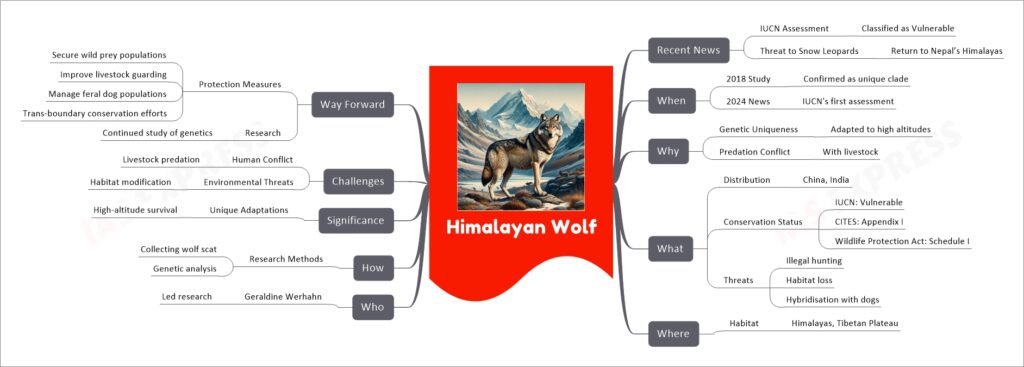Himalayan Wolf

The Himalayan Wolf, recently classified as ‘Vulnerable’ by the IUCN, is a unique species native to the Himalayas and Tibetan Plateau. A 2018 study first identified it as a genetically distinct clade, adapted for survival in high-altitude, low-oxygen environments. Researchers, led by Geraldine Werhahn, have been collecting and analyzing wolf scat for genetic studies. These wolves face threats from illegal hunting, habitat loss, and hybridization with dogs. They also conflict with local communities due to livestock predation. Conservation efforts focus on securing wild prey populations, improving livestock guarding methods, managing feral dog populations, and trans-boundary conservation initiatives. The Himalayan Wolf’s unique genetic adaptations for high-altitude survival highlight its ecological significance and the need for continued research and protective measures.

